By Wil Barrett
Photos: Pete Walsh & Wil Barrett
Price: Frame £2649, plus £3600 for the build kit totaling £6249 complete
From: www.IbisCycles.com / www.2pure.co.uk
Following on from last year’s introduction of the wildly popular Mojo HD3, Ibis Cycles have just pulled the wraps off its brand new baby brother.
The Mojo 3
The Mojo 3 is the latest trail bike from the Californian brand, and it’s equipped with 130mm of dw-link suspension out back and a 140mm travel fork up front. Aiming to offer the brawniness of the HD3 combined with the lightweight and efficiency of the Ripley, the Mojo 3 puts the emphasis on fun and all-round versatility. It rolls on 27.5” hoops, though owners can use a variety of different tyre widths to create the ultimate trail ripper to suit their riding style.
But before we go any further, lets rewind a little.
10 Years of Mojo
When the idea for the original Mojo Carbon was first cooked up by Scot Nicol & Hans Heim way back in 2002, I’m not sure that either one could have imagined the legacy this bike would carve out for their company.
And I know what you’re thinking. Yes it might be hard to believe, but it has actually been over 10 years since Ibis first unveiled the jaw-dropping Mojo back at Interbike in 2005. I don’t know about you, but I can still vividly remember seeing that bike for the first time, with its organic monocoque carbon frame and swoopy ovoidal lines. It truly was unlike anything else on the market at the time, and it still is to this day.
With its distinctive shape, 140mm of travel, and efficient dw-link suspension design, the sub-3kg Mojo frame certainly stood out for all the right reasons. As one of the first genuinely lightweight and long-travel carbon superbikes on the market, the Mojo earned itself an enviable reputation for its intuitive handling and all-day pedaling efficiency, which saw it become a favourite for intrepid mountain bikers from all over the globe.
Fast-forward to 2016, and the Mojo is now synonymous with the Ibis Cycles name. Such was the roaring success of the original model that the Mojo has given birth to several other ‘Mojo-lings’ over the years. Some have been lighter (the SL-R), some have had longer travel (the HD), and others have even had bigger wheels (the HDR). But all of them have paid homage to the original Mojo’s legacy and its eye-catching design, and all of them have enjoyed plenty of adoration in their own right.
In recent months though, some of our more eagle-eyed readers will have noticed a few nip ‘n’ tucks going on with the Ibis Cycles website. In fact, there has been some substantial shrinkage going on of the current models listed online. Only the Mojo HD3 and the Ripley 29 have remained as current full suspension models, while all of the previous bikes such as the Mojo HD and the Mojo SL-R have been quietly shelved into the discreet “Past Models” listing, their names destined for historical records.
With only the 120mm travel Ripley and the 150mm travel Mojo HD3 left in the lineup, a suspicious gap had opened up in between the two, leaving us to ponder what could be on the way from Ibis. Given the industry-wide resurgence of the humble trail bike over the past 18 months though, it would be a pretty safe bet to say that those crafty Ibisians were likely working on something on the lighter and nippier side of the mighty HD3.
And so looking to start the New Year off with a bang, the Santa Cruz based company has just released the latest version in the Mojo lineage, the very modern, and very versatile Mojo 3.
3rd Generation Mojo
In one sense, the Mojo 3 is meant to be the spiritual successor to the original Mojo. Indeed the ‘3’ in the name refers to it being the 3rd generation frame design, as it follows on from the original steel Mojo (Gen 1) that was released in the 90’s, and the Mojo Carbon (Gen 2) that was launched in 2005. But a quick glance at the key numbers (and those enormous 2.8” wide tyres) will tell you that this is one very different beast.
In reality, the Mojo 3 is more of a shrunken-down HD3. In terms of construction and stature, it shares much in common with its bigger brother, with a similar suspension layout and low-slung geometry.
The Mojo 3 packs in 130mm of travel out back in the newly updated dw-link suspension design. This is the 5th iteration of the dw-link, which has been carried over from the HD3. Like the original Mojo Carbon, the suspension employs two mini-linkages that join the swingarm to the mainframe, which control the wheel path and leverage ratio. What’s different about this suspension design however, is that there’s an additional shock extender (or yoke) that connects the upper seat stay to the lower eyelet of the rear shock. This yoke is what drives the rear shock, helping to deliver a more linear feel to the suspension. With two cartridge bearings in the lower yoke taking care of rotational duties, there is also less friction present, given the lower shock bush no longer needs to rotate.
Up front of the new Mojo 3 is a RockShox PIKE RCT3 fork, which dishes out 140mm of travel. As the current king of the Enduro circuit, the PIKE also makes for a brilliantly supple trail fork that should indicate towards the Mojo 3’s technical capabilities.
Ibis list the head angle at 66.8-degrees, which is pretty darn slack for a trail bike, and less than a degree steeper than the HD3. (On the note of head angles, it’s worth remembering that the Mojo Carbon featured a 69-degree head angle, despite also running a 140mm travel fork. How’s that!?).
Top tubes across the size range are fashionably long, and are perfectly suited to todays current crop of short stems and wide bars.
Although it’s nearly 200 grams lighter than the HD3, Ibis claim that the Mojo 3 is just as stiff and just as strong as its big brother. Where it differs is in its lower bottom bracket height (33.5cm vs 34.4cm), steeper seat angle (73.6 vs 72.6) and shorter chainstay length (42.5cm vs 43cm). These three changes might not sound drastically different, but their cumulative effect is to provide added agility and playfulness to the Mojo 3.
Other design features of the new Mojo 3 frame include a functional mixture of internal and external cable routing, with the rear brake hose secured behind a bolt-on armour guard along the downtube. Shop mechanics will also be happy to see a threaded bottom bracket shell, and there’s an optional ISCG-05 mount available aftermarket if you want to run a chainguide.
Although our test bike is spec’d with a 1×11 drivetrain, there is provision for a direct mount front derailleur. Also of note is the ability to fit a water bottle inside the main triangle, which was not possible on the original Mojo. I dig that a lot.
Fat & Skinny
But without doubt the feature that’ll generate most of the buzz around the new Mojo 3 is its wheelset. Or its tyres to be exact.
The Mojo 3 is built around 27.5” diameter wheels, and since the early days on the drawing board, this was always going to be the case. Where things began to deviate from the original plan was about two years ago, when 27.5 Plus began to emerge. As many companies also did, Ibis began testing these semi-fat 27.5” tyres, initially on their Ripley 29er, and eventually on Mojo 3 prototypes.
The benefits were clear, with the plus tyres providing more cornering grip, added confidence at speed, and a smoother overall ride. The downsides were more evident with 3.0” or wider tyres, which started to detract from the bikes acceleration and manoeuvrability. It also became clear that the plus tyres were not particularly good in mud, and for some test riders, they simply missed the agility of a regular 2.3” tyre on tighter singletrack.
Further testing led Ibis to conclude that 2.8” would be their ideal width for a 27.5 Plus setup, as it offered many of the benefits, while still allowing them to maintain the geometry and chainstay length they wanted for the Mojo 3.
And so during the development process, the decision was then made to make the new Mojo 3 plus-compatible. Not plus-specific, but simply capable of fitting up to 2.8” tyres if the owner wished to.
To do this, Ibis went for a Boost 148 rear end, which would see the drivetrain offset away from the frame by 3mm. This helped to provide the necessary real estate in the crucial chainstay and bottom bracket junction, which allows for that short 425mm chainstay length. The carbon frame has been sculpted to provide additional tyre clearance, though it is pretty snug back there. (Ibis made it clear that the Mojo 3 won’t fit anything bigger than a 2.8” wide tyre, so don’t even think about it!). The fork is also Boosted, with the 110mm wide spacing used to broaden the fork legs to accommodate the wider front tyre.
But while the frame was one part of the equation, the wheelset was another crucial component to plus-compatibility.
Luckily for Ibis, they already had a wheelset ready for the plus-phenomenon: the 741. Featuring an external rim width of 41mm and an internal rim width of 35mm, the 741 would prove to be a perfect platform for 2.8” wide rubber. But as it had already proven since its inception 2 years ago, it would also sit fine with regular 27.5” tyres too.
The end result then, is a trail bike that’s as versatile as possible, with the capability of running 2.2” – 2.8” tyres on the same frame and wheelset. At the time of purchase, riders can elect as to which tyre setup they’d like the Mojo 3 to come with, whether that’s a 2.3/2.2” combo, the new 2.5” Wide Tread Minions from Maxxis, or the 2.8” Schwalbe Nobby Nics. Pretty cool eh?
It certainly makes the Mojo 3 a versatile little package, and combined with Ibis’ efficient dw-link suspension design, the stout carbon frame and contemporary geometry, this clever wheelset versatility is likely to resonate with a lot of riders out there.
Like what you see and wanna know more? Stay tuned for our first ride report of the brand new Mojo 3
[fbvideo link=”https://business.facebook.com/singletrackmag/videos/10153654867778612/” width=”650″ height=”400″ onlyvideo=”0″]
Can’t see the video? Click Here
Comments (1)
Leave Reply
Post Comment

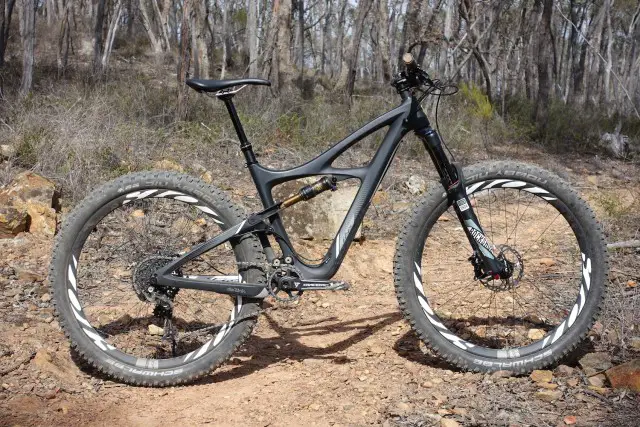
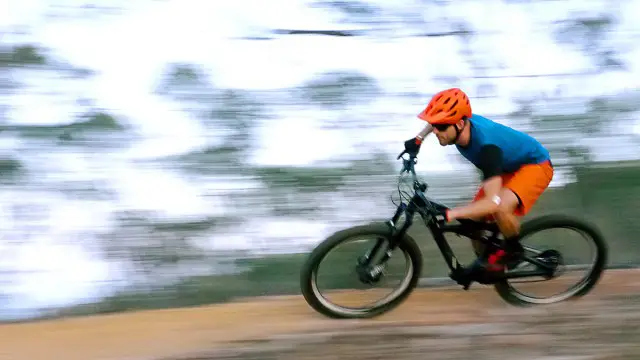
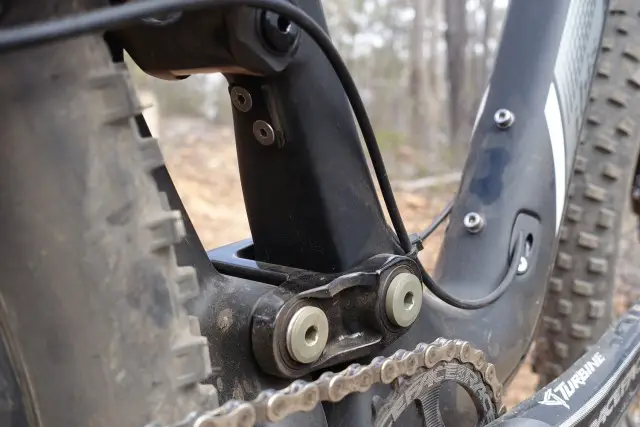
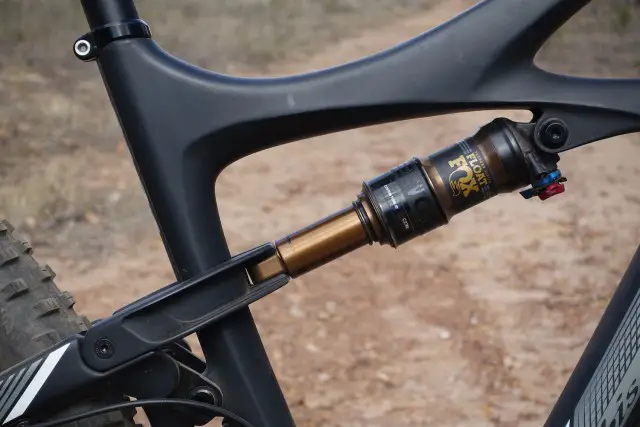
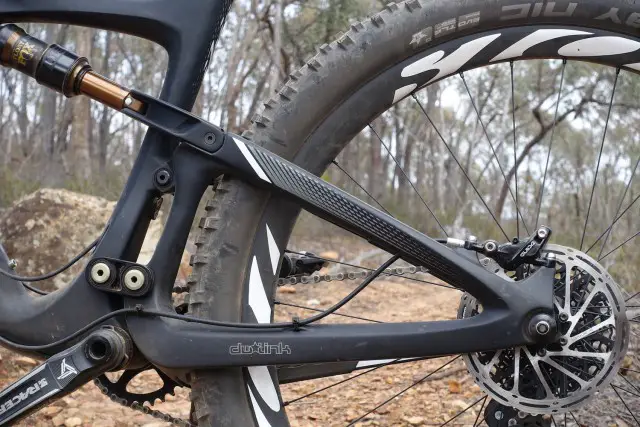
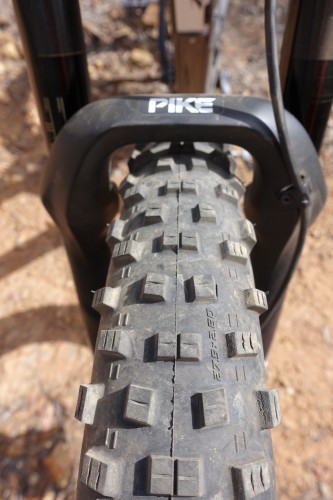



What the heck were they doing with those cranks in the top stock picture?!